 |
 |
 |
| |
Safety and Antiviral Activity of MK-5172, a Novel HCV NS3/4a Protease Inhibitor with Potent Activity Against Known Resistance Mutants, in Genotype 1 and 3 HCV-Infected Patients
|
| |
| |
Reported by Jules Levin
AASLD Nov 1 2010 Boston
MK-5172, the 1st HCV Protease Inibitor with Potent Acyivity ...
MK-5172, the 1st HCV Protease Inibitor with Potent Acyivity Against Resistance Mutations In Vitro. Reported by Jules Levin EASL Apr 14-18 2010 Vienna ...
www.natap.org/2010/EASL/EASL_38.htm
Amelia Petry1, Diana M. Brainard1, Kristien Van Dyck1, Robert B. Nachbar1, Inge De Lepeleire1, Luzelena Caro1, Julie A. Stone1, Peng Sun1, Markus Uhle2, Frank Wagner2, Edward O'Mara1, John A. Wagner1
1Merck & Co., Inc., Whitehouse Station, NJ, 2Charité Research Organization GmbH, Berlin, Germany

BACKGROUND
MK-5172 is a novel, competitive inhibitor of the HCV NS3/4a protease with selective, potent in vitro activity against a broad range of HCV genotypes (GTs) and known viral variants that are resistant to other protease inhibitors in development.
MK-5172 exhibits excellent selectivity over other serine proteases such as elastase and trypsin (no measurable inhibition), and shows only modest inhibitory potency with chymotrypsin (IC50 = 1.5 µM; 75,000-fold selective).
In the genotype 1b replicon assay, MK-5172 potently inhibits viral replication (IC50 = 2 nM) and demonstrates a modest shift in the presence of 50% NHS (EC50 = 9.5 nM). In vitro, MK-5172 inhibits the NS3/4A enzyme from genotypes 1b, 2a, 2b, and 3a with Ki values of <0.02, 0.15, 0.02, and 0.7 nM, respectively. The genotype 2a replicon is also potently inhibited by MK 5172 (EC50 = 5 nM).
AUTHOR DISCUSSION
Multiple oral doses of 400 mg MK-5172 qd for 7 days were generally well tolerated in HCV-infected patients.
Mean maximum reductions from baseline of HCV viral RNA (Ses) were 5.4 (0.21) and 3.98 (0.22) log10 IU/mL for GT 1 and 3, respectively.
No on-treatment related viral rebound was observed in any patient.
Five GT 1 patients had decreases in HCV RNA to levels below the lower limit of detection during the study period.
The mean time to nadir was more than 2 days after the last dose.
By the 1 month follow-up visit, plasma levels of HCV RNA had returned to baseline levels for those patients for whom these data were available.
Pharmacokinetic values of MK-5172 in HCV-infected patients were higher than values observed in healthy subjects (Petry, et al, Safety, tolerability and pharmacokinetics after single and multiple doses of MK-5172, a novel HCV NS3/4a protease inhibitor with potent activity against known resistance mutants, in healthy subjects. Poster # 1885, AASLD: The Liver Meeting 2010, Boston, MA, October 2010).
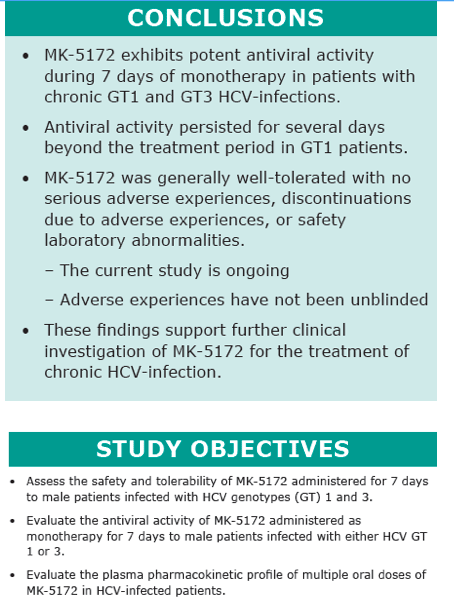
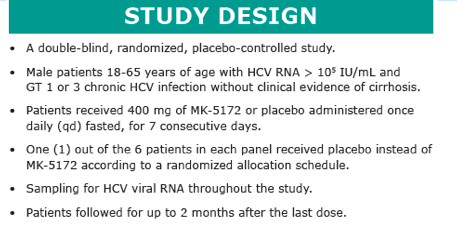
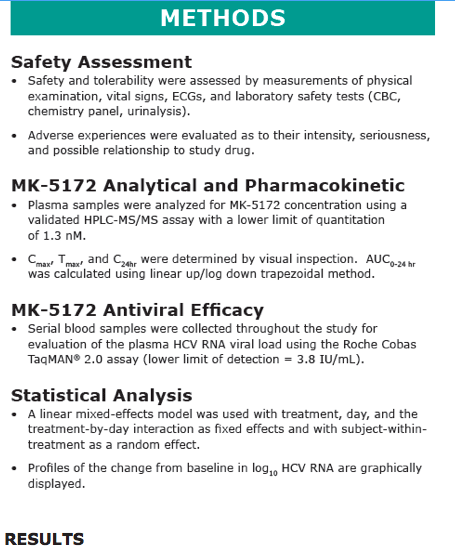
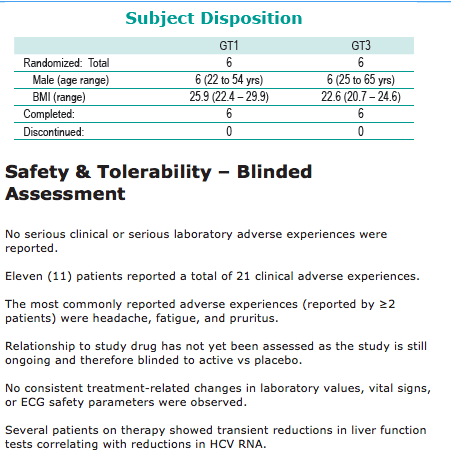
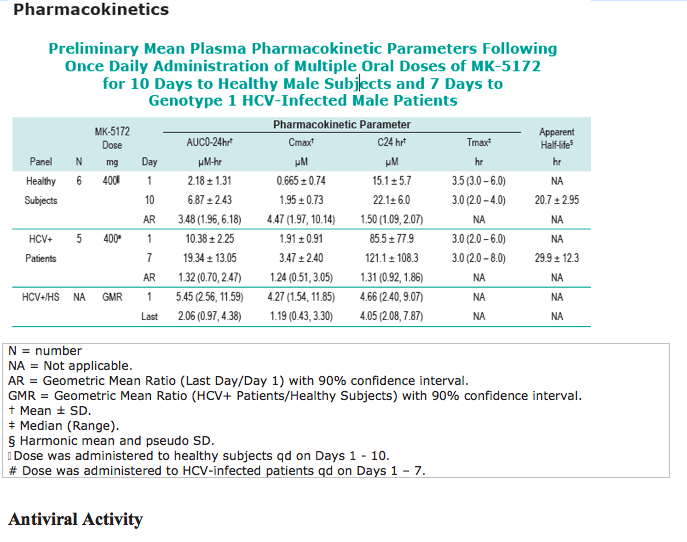
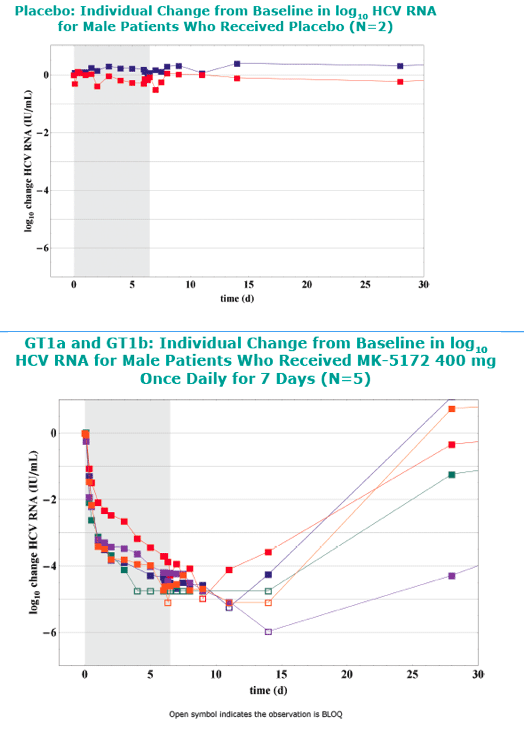
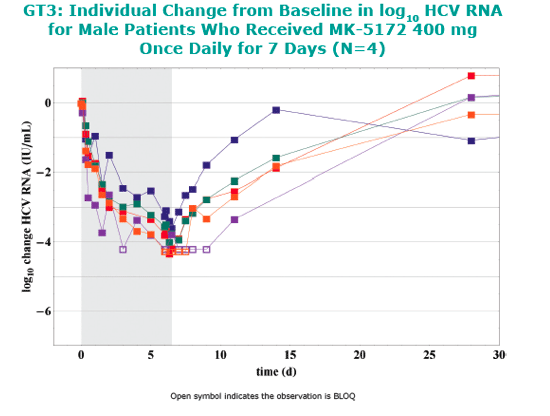
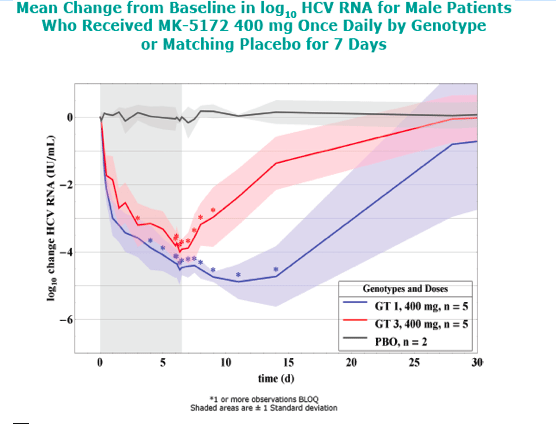
|
| |
|
 |
 |
|
|